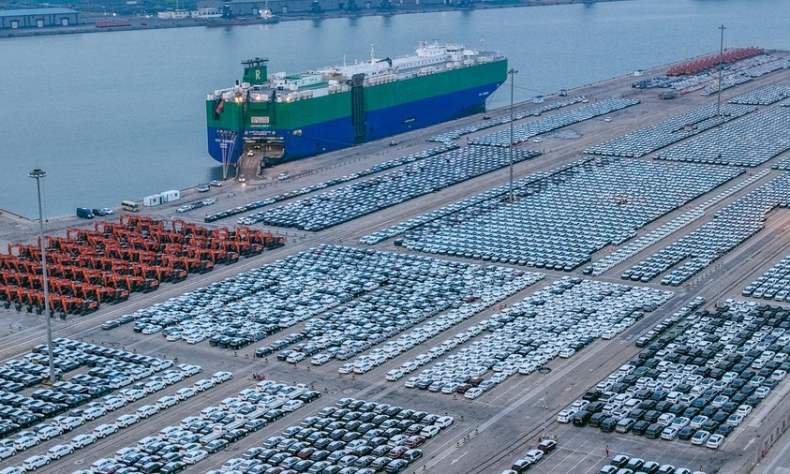A Trade War’s Hidden Battles

As the world’s two largest economies, friction between the U.S. and China will inevitably affect global economic recovery. So if everyone loses, what is the point of the game?
As U.S. President Joe Biden signed an executive order imposing new tariffs on Chinese goods, including electric vehicles (EVs), aluminum and advanced batteries, on May 14, he may not have wanted to recall the promise he made while running for president: Once elected, he would end the trade war with China initiated by the United States. “President [Donald] Trump may think he’s being tough on China, but all he has delivered is more pain for American farmers, manufacturers and consumers,” he said in a campaign speech in New York City in July 2019.
On May 14, the tariff on Chinese-made EVs was increased from 25 percent to 100 percent, and Chinese lithium-ion batteries for EVs will now face an elevated tariff rate of 25 percent, up from the previous 7.5 percent.
Barring unforeseen circumstances, U.S. citizens are likely to see the battles of the trade war, launched by then U.S. President Donald Trump in 2018, continue for another four years.
Today, Trump, who is seeking another term in office, has already made it clear that if he returns to the White House, he will impose an additional 10-percent tariff on all goods imported into the U.S., adopt new measures to sever trade ties with China and ban the import of Chinese steel, electronic products and pharmaceuticals.
During his presidential term, he imposed tariffs on more than $360 billion worth of Chinese products, including toys, electronics and household furnishings.
Both Biden and Trump have claimed their reason for initiating the trade war is to protect the interests of Americans. According to their rationale, by imposing higher tariffs to combat the price advantages of Chinese goods, it is possible to reinvigorate and shield American enterprises, in turn creating more jobs.
But this argument is riddled with shortcomings. The U.S. economy operates as a free market economy, where the core principle is to effectively allocate resources through the market to achieve maximum efficiency and profits.

To give a simple example, China exports about 6.5 billion disposable lighters each year, almost monopolizing the global market. Trivial as it may seem, a lighter is actually a sophisticated industrial product. One lighter consists of more than 20 parts, each part coming with its own patent. Only a few countries are able to produce this product independently, China being one of them. On Amazon, the world’s largest online retailer, U.S. consumers can buy 50 Chinese-made lighters for $15. The ability of China to produce such cheap lighters is due to the industrial chain and labor advantages the country has. Moreover, Chinese consumers alone consume nearly 7 billion disposable lighters each year.
Of course it’s highly likely that if China had only been capable of producing disposable lighters, shirts and Christmas decorations, the U.S. never would have instigated a trade war against it, given the minimal profit margins on these items. When China joined the World Trade Organization in 2001, Chinese netizens actually lamented that the foreign exchange earned from exporting 800 million shirts was barely enough to purchase a single Boeing aircraft.
But as China’s manufacturing industry continues to develop, Chinese manufacturers have mastered the art of producing lighters at bottom prices, and they have moved on to apply a similar modus operandi to the production of televisions, washing machines, tunnel boring machines, photovoltaic products and EVs. American elites are beginning to realize that China is not willing to always be at the bottom of the global division of production. Many worry that once China, with its industrial capabilities, achieves a breakthrough in the hi-tech field, it may subvert the global industrial pattern, considerably reducing the price of high-end industrial products.
This is the core logic of the trade war launched by the U.S. Whether it is the tariff increase during the Trump era or the Biden administration’s continued blockade of China in the hi-tech field, it’s all about sustaining U.S. hegemony.
But is a trade war really the way to do so? After six years, the U.S. does not appear to be victorious. The country’s manufacturing industry has increased the financial burden on low- and middle-income families, and domestic demand for an end to the trade war remains unabated.
As the world’s two largest economies, friction between the U.S. and China will inevitably affect global economic recovery. So if everyone loses, what is the point of the game?
 Facebook
Facebook
 Twitter
Twitter
 Linkedin
Linkedin
 Google +
Google +










